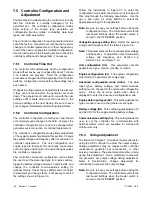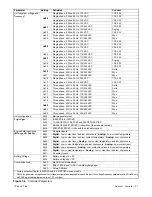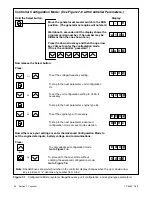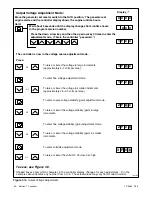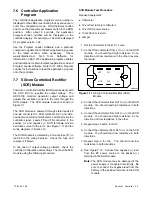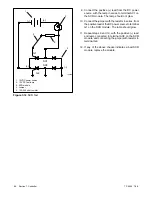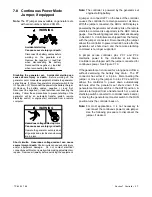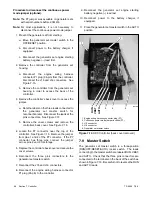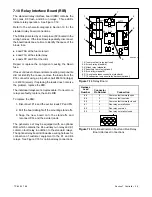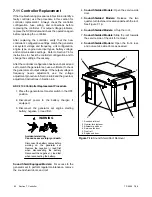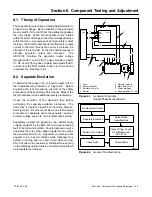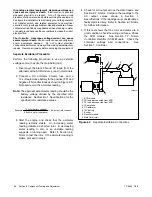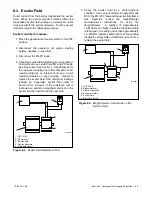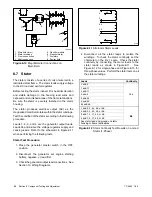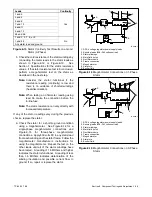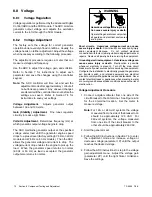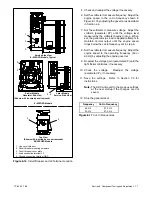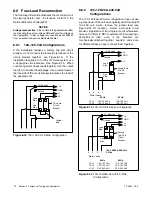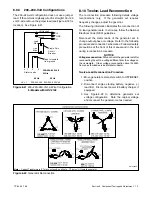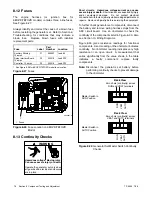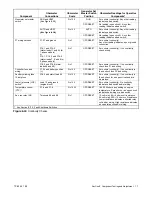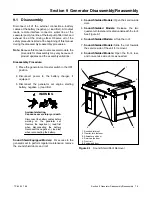
TP-6255 7/06
64
Section 8 Component Testing and Adjustment
Grounding electrical equipment. Hazardous voltage can
cause severe injury or death.
Electrocution is possible
whenever electricity is present.
Turn off the main circuit
breakers of all power sources before servicing the equipment.
Configure the installation to electrically ground the generator
set, transfer switch, and related equipment and electrical
circuits to comply with applicable codes and standards. Never
contact electrical leads or appliances when standing in water
or on wet ground because these conditions increase the risk of
electrocution.
Short circuits.
Hazardous voltage/current can cause
severe injury or death.
Short circuits can cause bodily injury
and/or equipment damage
.
Do not contact electrical
connections with tools or jewelry while making adjustments or
repairs. Remove all jewelry before servicing the equipment.
Separate Excitation Procedure:
Perform the following procedure to use an external
voltage source to excite the main field (rotor).
1. Disconnect the black FN and FP leads from the
alternator at the SCR module (+) and (--) terminals.
2. Connect a DC ammeter, 20-amp fuse, and a
12-volt automotive battery to the positive (FP) and
negative (FN) exciter leads as shown in Figure 8-3.
Note and record the ammeter reading.
Note:
The approximate ammeter reading should be the
battery voltage divided by the specified rotor
resistance. See Section 1, Specifications, for the
specified rotor resistance values.
Example :
12 volts (battery voltage)
3.5 ohms (rotor resistance)
=
3.4 amps (rotor current)
3. Start the engine and check that the ammeter
reading remains stable.
An increasing meter
reading indicates a shorted rotor. A decreasing
meter reading to zero or an unstable reading
suggests a running open. Refer to Section 8.6,
Rotor, to test the rotor. If the ammeter reading is
stable, proceed to step 4.
4. Check for AC output across the stator leads; see
Section 8.7, Stator. Compare the readings to the
AC
output
values
shown
in
Section
1,
Specifications. If the readings vary considerably, a
faulty stator is likely. Refer to Section 8.7, Stator,
for further information.
5. If this test shows that the rotor and stator are in
good condition, check the wiring and fuses. Check
the SCR module.
See Section 7.7, Silicon
Controlled Rectifier (SCR) Module.
Check the
controller
settings
and
connections.
See
Section 7, Controller.
AC
F +
F --
AC
AC
+
-
+
1
2
3
4
5
6
7
8
9
TP563274
-
1. SCR module
2. FN lead disconnected from SCR
3. FP lead disconnected from SCR
4. 10-amp fuse
5. DC ammeter
6. 12V battery
7. Exciter
8. Rectifier module
9. Main field (rotor)
FP
FN
Figure 8-3
Separate Excitation Connections
Summary of Contents for 6.5-27EFOZD
Page 1: ...Marine Generator Sets Models 8 32EOZD 6 5 27EFOZD TP 6255 7 06a Service ...
Page 12: ...TP 6255 7 06 12 Service Assistance Notes ...
Page 22: ...TP 6255 7 06 22 Section 1 Specifications Notes ...
Page 28: ...TP 6255 7 06 28 Section 3 Intake and Exhaust System Notes ...
Page 62: ...TP 6255 7 06 62 Section 7 Controller Notes ...
Page 78: ...TP 6255 7 06 78 Section 8 Component Testing and Adjustment Notes ...
Page 92: ...TP 6255 7 06 92 Section 10 Wiring Diagrams Notes ...
Page 100: ...TP 6255 7 06 100 ...
Page 101: ...TP 6255 7 06 101 ...
Page 102: ...TP 6255 7 06 102 ...
Page 103: ...TP 6255 7 06 103 ...

